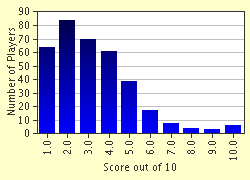Quiz Answer Key and Fun Facts
1. Which of the following is NOT a format designed for recording digital video?
2. D-VHS had problems right out of the gate. One of the issues was agreeing on a form of copy-protection for this fledgling format. When they finally decided on a protection scheme, it was dubbed:
3. DVDs come in various sizes including DVD-5, DVD-9, DVD-10 and even the whopping DVD-18. How much Data can a DVD-5 hold?
4. DVD-9 is the single sided, dual layer format for DVDs that many home movies use. They are often mastered in a layout called RSDL. What does RSDL stand for?
5. What home video title released by Artisan Entertainment became the first publicly available DVD-18? (That is, the first two-sided, dual-layered disc.)
6. In 2000 VM Labs introduced a technology which allowed for enhanced interactivity and faster access times making impressive video games possible on DVD players. This extra specification for DVD interactivity was called ______?
7. Early in DVD history one competitor introduced by Circuit City offered disposable DVDs that would no longer play once a temporary license to view the content had expired. Those discs were called the _____ format.
8. Most digital video cameras allow the user to capture video to a computer or digital editing system with no quality loss by sending the signal out through a fire-wire cable. This might be known simply as a DV cable to some camcorder owners, but to Sony camcorder owners specifically, this cable is also known as an _______ cable.
9. Most video signals on consumer camcorders are shot in an alternating pattern of horizontal lines that makes up 60 "fields" of video per second instead of 30 "frames" of video per second. These two different methods of capturing the moving image are called..
10. What video compression scheme is used to create video streams for DVD?
Source: Author
Andonyx
This quiz was reviewed by FunTrivia editor
crisw before going online.
Any errors found in FunTrivia content are routinely corrected through our feedback system.


